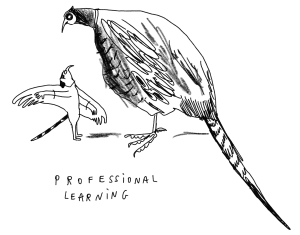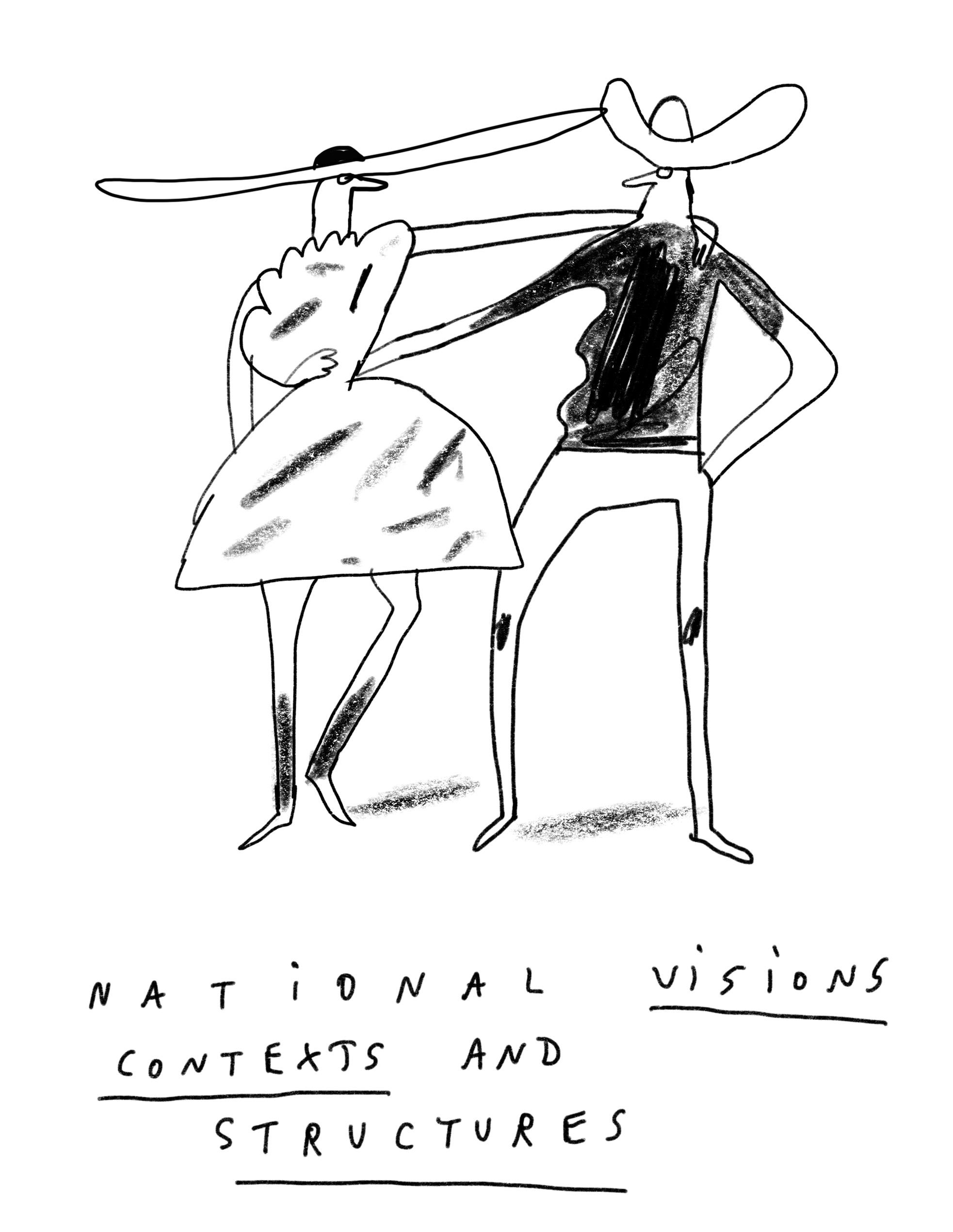About Leadership Demographics in Theatre and Performing Arts for Children and Young People (TYA)
This project is one of the five streams of research undertaken by ASSITEJ International as part of the Global, Advocacy-Focused Research under the ‘Building Collective Resilience’ project co-funded by the European Union and Danish Arts Foundation. Inspired by TYA/USA ‘Theatre for Young Audiences: State of the Field Report’ (2019), which included a leadership demographics survey in its study, this project aims to provide a snapshot of TYA leadership demographics on an international level that will hopefully spark further research and conversations.

Why this project matters
Transformational leadership – which focuses on the needs of the team, raising their motivation, and providing an ethical framework for decisions – has gained interest in management discourses over the last few years. Central to this culture in the workplace is ensuring that diversity, inclusion, and equitable opportunities are prioritised, encouraging employees to innovate and develop new ways to grow, thereby ultimately contributing to the success of the company’s future.
Currently, there is a lack of studies on the leadership demographic in the TYA sector. The primary aim is to provide a scan of the TYA landscape but it also hopes to capture relevant data that can provoke questions about the importance of diversity within leadership.
Within ASSITEJ International, this project also overlaps with IIAN’s goals and will make for deeper connections and collaboration across the different networks and centres.
How are we doing it?
In line with ASSITEJ International, we are approaching TYA as work with/for/by young people aged 0-18 years. This project is divided into three parts
- Consultation between ASSITEJ International, the research committee, and ASSITEJ National Centres to investigate a range of ‘keywords’ relating to TYA and leadership demographics (e.g. gender, background, equality) to understand how – and to what extent – they might be used within and across different contexts. At the same time, drawing on scholarship, national and government websites (e.g., UNESCO, Eurostat), and reports to help us consider the rationale and approaches in which world leaders and policy-makers select and measure these ‘variables.’
- Survey: we will engage with participants through a series of questions to establish patterns and gather insights into leadership demographics in their respective contexts.
- Interviews: We will conduct interviews with key personnel to make connections and draw on their experiences as case studies.
All work will have clear safeguarding guidelines, and participants will be informed of how the data will be used, stored, and disseminated in accordance with the professional ethical code of research.
 National Centres we will reach out to
National Centres we will reach out to
For this pilot study, we will survey a sample across different continents to ensure a diversity of socio-cultural identities and a balance of geographical representation. In consultation with the National Centres, we intend to connect with the following countries:
Australia, Singapore, Korea, Argentina, Denmark, India, Italy, South Africa, Nigeria, Canada, and Brazil.
Factors considered when choosing countries for the leadership demographic survey (in order of priority):
Geographical Diversity: We have selected countries from different regions across the globe to capture variations in cultural, social, and economic contexts. These countries are from seven regions as defined by The World Bank, i.e., East Asia & Pacific, South Asia, Europe & Central Asia, Middle East & North Africa, Sub-Saharan Africa, Latin American & Caribbean, and North America. The above countries have been shortlisted based on the size and number of countries within each continent.
Language: We have taken the top ten most spoken languages in the world as the base, i.e., English, Mandarin, Hindi, Spanish, French, Arabic, Bengali, Portuguese, Russian, and Urdu, as well as Italian, since ASSITEJ is legally registered in Italy. We have considered countries that have monolingual and multilingual official and working languages to account for language-specific nuances and communication dynamics in leadership. Language can play a role in leadership representation and communication styles, so including diverse language contexts is important.
Economic Development: We have chosen countries with varying levels of economic development, such as high-income, middle-income, and low-income economies. This diversity can help us understand how leadership demographics vary in different economic contexts and can shed light on the relationship between economic development and leadership representation. We have referred to The World Bank’s data of World Development Indicators: The World by Income map. We acknowledge that there are no low-income economies on the list.
Population Size: We have selected countries with different population sizes. Including countries with large populations can provide a broader representation of leadership demographics, while countries with smaller populations may offer insights into unique challenges and opportunities in smaller-scale contexts.
Historical Significance (ASSITEJ): Since ASSITEJ International was established almost 60 years ago, we have considered countries whose National Centres have historical significance regarding their involvement with the association (such as hosting formative meetings, World Congresses, Artistic Gatherings, and ‘Next Generation’ residencies. Past involvement with ASSITEJ, supporting young professionals, and the strength of members of National Centres, help to track the TYA landscape in the country.
Practical Considerations: We will take into account practical considerations such as research resources, logistical feasibility, and access to data.
Availability of research partners or collaborators in the chosen countries to facilitate data collection and interpretation, including members of the current ASSITEJ International Executive Committee and volunteers who have signed up to support the process.
Objectives
Our objectives are threefold:
- To enrich, expand, and enhance the discussion about TYA and leadership by connecting with voices and practices that traverse global spaces and regions.
- To provide a snapshot of leadership demographics in order to identify the patterns, philosophies, and practices of artists, producers, and policy-makers who are focusing deeply on equity, diversity, and inclusion in the TYA sectors across the world.
- To identify potentials and challenges in the current policy and practice landscape in order to provoke discussions about the future environments where theatre and young people meet.
Timeline
Phase 1 (May to August): Literature review and slow thinking to determine key variables and themes for the survey. Shortlist participating countries.
Phase 2 (August to November): Draft sample survey, gather feedback from a focus group, refine survey, and gather perspectives on leadership and diversity from participants at AAG 2023 in Serbia.
Phase 3 (November to January): Initiate contact with shortlisted National Centres, gather responses, share initial findings, analyse collected data, and formulate follow-up questions and basis for case studies
Phase 4 (January to April): Conduct case studies, and compile all findings.
 Please get in touch if you would like to be involved or learn more about the project.
Please get in touch if you would like to be involved or learn more about the project.
Email research leads Nishna Mehta and Caleb Lee at leadership-demographics@assitej-international.org
Leadership Demographics in Theatre and Performing Arts for Children and Young People (TYA) – Dictionary
*These definitions are a reference to the context of the survey. Some definitions have been put together by us to simplify the concepts.
Leadership – The people who are in charge of a country, organisation, etc
Demographic – “description of people”
Demography is the study of the size, territorial distribution, and composition of population, changes therein, and the components of such changes, which may be identified as natality, mortality, territorial movement (migration), and social mobility (change of status).” (Duncan & Hauser 1972) *As cited in Overview of Demographic Concepts and Methods, United Nations Statistic Division.
Demography terms
Minority – A minority is the number of people with different characteristics, traits, and qualities than most of the group or country.
*There is no internationally agreed definition of who is a minority. (un.org)
Majority – The largest number of a group of people with the same characteristics, traits and qualities in a group or country.
Practice-related terms
Applied Theatre – Using theatre techniques as a tool to create personal and social change.
Theatre-in-Education – Using drama or theatre techniques to foster effective learning in education. (ASSITEJ Dictionary)
Theatre for Young Audiences – Professional performance that is particularly designed for children and family audiences within the cultural sector.” (Nicholson, 2011: p87)
Youth Theatre – A group or several groups of young people who come together to regularly participate in performing arts-related activities. (National Association of Youth Theatre, UK)
Diversity-related terms
Inclusion – The means by which individuals from all backgrounds are engaged, integrated, motivated, and valued (‘Catch the Wave’ Access Notes, International Inclusive Arts Network)
Diversity – the wide variety of something
Equity – Fair treatment for all people
Access – One of the means by which we create inclusion. Access removes barriers (physical, systematic, economic, social), and ensures individuals have the choice to be included (‘Catch the Wave’ Access Notes, International Inclusive Arts Network)
Intersectionality – The combination of different dimensions (of inclusion)


